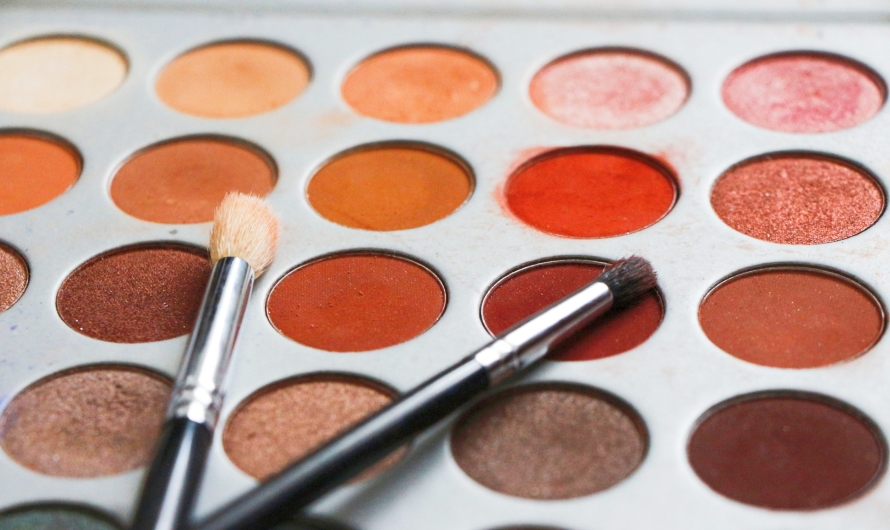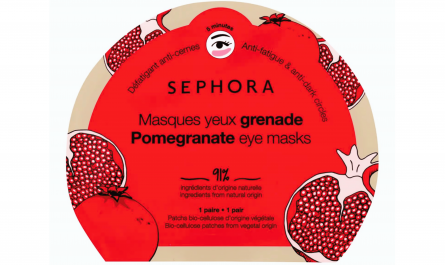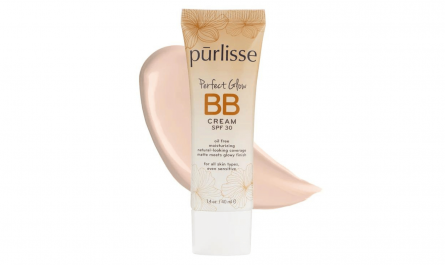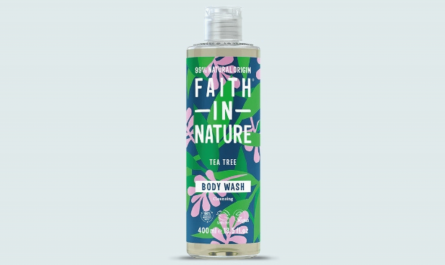Eyeshadow is one of the most versatile and fun makeup products you can use to enhance your eyes and express your personality. However, not all eyeshadow palettes are created equal. Depending on your eye color and skin tone, some colors may look more flattering and harmonious on you than others. That’s why it’s important to choose the right eyeshadow palette for your unique features and preferences.
In this article, we’ll guide you through the process of determining your eye color and skin tone, and how to use them as a basis for selecting the best eyeshadow palette for you. We’ll also introduce you to some of the best eyeshadow palettes for each eye color and skin tone combination, as well as some tips on how to apply them for different looks. By the end of this article, you’ll have a better idea of what eyeshadow palettes suit you best, and how to make the most of them.
How to Determine Your Eye Color and Skin Tone
Before you start shopping for eyeshadow palettes, you need to know what eye color and skin tone you have. These two factors will influence what colors will complement and contrast with your natural features, and create different effects on your eyes.
Eye Color
Eye color is determined by the amount and distribution of melanin (a pigment) in your iris (the colored part of your eye). There are many variations of eye color, but they can be broadly categorized into four main groups: blue, green, hazel, and brown.
- Blue eyes have very little melanin in their iris, which allows more light to pass through and reflect off the underlying layer of collagen. This creates a blue appearance that can range from light to dark, depending on the amount of collagen and other factors. Blue eyes are relatively rare, especially in non-European populations.
- Green eyes have a moderate amount of melanin in their iris, which gives them a greenish hue that can vary from olive to emerald. Green eyes are also rare, especially in Asian and African populations. They are often influenced by environmental factors, such as sunlight and clothing colors, which can make them appear more or less green.
- Hazel eyes have a high amount of melanin in their iris, which creates a mixture of brown, green, and sometimes gold or gray colors. Hazel eyes are very common, especially in European and Middle Eastern populations. They are also very versatile, as they can change their appearance depending on the lighting and mood of the person.
- Brown eyes have the highest amount of melanin in their iris, which gives them a brown color that can range from light to dark, depending on the concentration and distribution of the pigment. Brown eyes are the most common eye color in the world, especially in Asian, African, and Latin American populations. They are also very expressive, as they can convey emotions and personality traits.
To identify your eye color, you can look at yourself in natural light or take a close-up photo of your eyes. Compare your eyes with the descriptions above
Skin Tone
Skin tone is determined by the amount and type of melanin (a pigment) in your skin cells. There are many variations of skin tone, but they can be broadly categorized into six main groups: fair, light, medium
- Fair skin has very little melanin in the skin cells, which makes it very pale and prone to sunburns. Fair skin can have cool, warm, or neutral undertones, depending on the presence of other pigments like hemoglobin (red) and carotene (yellow) in the skin. Fair skin is common in people of Northern European descent.
- Light skin has a low amount of melanin in the skin cells, which makes it slightly darker than fair skin but still light. Light skin can also have cool, warm, or neutral undertones, depending on the balance of other pigments in the skin. Light skin is common in people of Southern European, Middle Eastern, and North African descent.
- Medium skin has a moderate amount of melanin in the skin cells, which makes it neither too light nor too dark. Medium skin can have cool, warm, or neutral undertones, depending on the ratio of other pigments in the skin. Medium skin is common in people of Asian, Latin American, and Mediterranean descent.
- Tan skin has a high amount of melanin in the skin cells, which makes it darker than medium skin but still lighter than dark skin. Tan skin can have cool, warm, or neutral undertones, depending on the amount of other pigments in the skin. Tan skin is common in people of South Asian, Middle Eastern, and Latin American descent.
- Dark skin has a very high amount of melanin in the skin cells, which makes it dark brown or black. Dark skin can have cool, warm, or neutral undertones, depending on the type of melanin (eumelanin or pheomelanin) in the skin. Dark skin is common in people of African and Aboriginal descent.
- Deep skin has the highest amount of melanin in the skin cells, which makes it very dark brown or black. Deep skin can have cool, warm, or neutral undertones, depending on the type and distribution of melanin in the skin. Deep skin is common in people of African and Aboriginal descent.
To identify your skin tone, you can look at yourself in natural light or take a photo of your face. Compare your skin with the descriptions above
How to Choose the Right Eyeshadow Palette for Your Eye Color and Skin Tone
Now that you know your eye color and skin tone, you can use them as a guide to choose the best eyeshadow palette for you. There are three main factors to consider when selecting an eyeshadow palette: the color wheel, the undertone, and the finish.
The Color Wheel
The color wheel is a tool that shows the relationship between different colors. It consists of three primary colors (red, yellow, and blue), three secondary colors (orange, green, and purple), and six tertiary colors (red-orange, yellow-orange, yellow-green, blue-green, blue-purple, and red-purple). The colors on the opposite sides of the wheel are called complementary colors (such as red and green), while the colors next to each other are called analogous colors (such as yellow and green).
You can use the color wheel to find eyeshadow colors that will enhance or contrast with your eye color. For example:
- If you have blue eyes, you can use eyeshadow colors that are complementary to blue, such as warm browns,
oranges,
golds,
coppers,
etc.
These colors will make your eyes pop and stand out more. - If you have green eyes,
you can use eyeshadow colors that are complementary to green,
such as
earthy khakis,
olives,
mosses,
bronzes,
etc.
These colors will accentuate your eyes and bring out their natural beauty. - If you have hazel eyes,
you can use eyeshadow colors that are analogous to hazel,
such as
light browns,
creams,
champagnes,
golds,
etc.
These colors will highlight your eyes and create a soft and natural look. - If you have brown eyes,
you can use eyeshadow colors that are any color on the wheel,
since brown is a neutral color that goes well with everything.
However,
some colors that will especially flatter your eyes are
pastel blues,
greens,
pinks,
purples,
etc.
These colors will add some brightness and contrast to your eyes.
The Undertone
The undertone is the subtle hue that underlies your skin tone. It can be cool (pinkish), warm (yellowish), or neutral (neither). Your undertone affects how certain colors look on you and how they match with your eye color.
You can determine your undertone by looking at the veins on your wrist. If they appear blue or purple, you have a cool undertone. If they appear green or olive, you have a warm undertone. If they appear blue-green or unclear, you have a neutral undertone.
You can also use your undertone to find eyeshadow colors that will flatter your skin tone. For example:
- If you have a cool undertone, you can use eyeshadow colors that are cool or neutral, such as grays, silvers, blues, purples, pinks, etc. These colors will complement your skin and create a balanced look.
- If you have a warm undertone, you can use eyeshadow colors that are warm or neutral, such as browns, beiges, taupes, oranges, corals, peaches, etc. These colors will harmonize with your skin and create a warm look.
- If you have a neutral undertone, you can use eyeshadow colors that are any color on the wheel, since you can pull off both cool and warm colors. However, some colors that will especially suit your skin are mauves, roses, lavenders, greens, teals, etc. These colors will add some interest and dimension to your skin.
The Finish
The finish is the texture and appearance of the eyeshadow. It can be matte (flat and no shine), shimmer (slightly shiny and reflective), glitter (sparkly and metallic), or metallic (highly shiny and reflective). The finish affects how the eyeshadow looks on your eyes and how it blends with other colors.
You can choose the finish of your eyeshadow based on your preference and the occasion. For example:
- If you want a natural and subtle look, you can use matte eyeshadows. They are easy to blend and create a smooth and even finish. They are also great for everyday wear and for defining your crease and outer corner.
- If you want a glamorous and festive look, you can use shimmer or glitter eyeshadows. They add some shine and sparkle to your eyes and make them more noticeable. They are also great for special occasions and for highlighting your inner corner and brow bone.
- If you want a dramatic and edgy look, you can use metallic eyeshadows. They create a high-impact and bold finish that reflects light and draws attention to your eyes. They are also great for night-time wear and for creating a smokey eye effect.
The Best Eyeshadow Palettes for Each Eye Color and Skin Tone Combination
Now that you know how to choose the right eyeshadow palette for your eye color and skin tone, here are some of the best eyeshadow palettes for each combination. We’ve selected some of the most popular and high-quality palettes from different brands and price ranges that offer a variety of colors, finishes, and formulas to suit your needs.
Blue Eyes and Fair Skin
If you have blue eyes and fair skin, you can use eyeshadow palettes that feature warm browns,
oranges,
golds,
coppers,
etc.
These colors will contrast with your eyes and make them stand out more.
Blue Eyes and Light Skin
If you have blue eyes and light skin,
you can use eyeshadow palettes that feature cool grays,
silvers,
blues,
purples,
etc.
These colors will complement your eyes
and create a cool-toned look.
Blue Eyes and Medium Skin
If you have blue eyes and medium skin, you can use eyeshadow palettes that feature neutral taupes, beiges, mauves, pinks, etc. These colors will balance your eyes and create a natural and elegant look.
Blue Eyes and Tan Skin
If you have blue eyes and tan skin, you can use eyeshadow palettes that feature rich burgundies, plums, cranberries, chocolates, etc. These colors will enhance your eyes and create a warm and sultry look.
Blue Eyes and Dark Skin
If you have blue eyes and dark skin, you can use eyeshadow palettes that feature vibrant greens, teals, turquoises, magentas, etc. These colors will contrast with your eyes and create a fun and colorful look.
Conclusion
Choosing the right eyeshadow palette for your eye color and skin tone can make a big difference in your makeup look. By using the color wheel, the undertone, and the finish as your guides, you can find eyeshadow colors that will complement and contrast with your natural features, and create different effects on your eyes. You can also experiment with different eyeshadow palettes that suit your combination, and discover new ways to enhance your eyes and express your personality.
We hope this article has helped you find the best eyeshadow palettes for your eye color and skin tone, and inspired you to try them out. Remember, there is no right or wrong way to wear eyeshadow, as long as you have fun and feel confident with it.
FAQs
Here are some frequently asked questions and answers related to the topic of this article.
How to make your eyeshadow last longer?
To make your eyeshadow last longer, you can follow these steps:
- Apply an eyeshadow primer on your eyelids before applying eyeshadow. This will create a smooth and even base for your eyeshadow, and prevent it from creasing, fading, or smudging throughout the day.
- Use a setting spray or a powder on top of your eyeshadow after applying it. This will lock in your eyeshadow and make it more resistant to sweat, oil, or humidity.
- Choose high-quality eyeshadows that have good pigmentation, blendability, and longevity. You can also look for eyeshadows that are waterproof, smudge-proof, or transfer-proof for extra durability.
How to blend your eyeshadow seamlessly?
To blend your eyeshadow seamlessly, you can follow these tips:
- Use a fluffy blending brush to blend your eyeshadow in circular or windshield wiper motions. This will create a soft and smooth transition between different colors and finishes.
- Use a clean blending brush to blend the edges of your eyeshadow and remove any harsh lines or patches. This will create a more natural and polished look.
- Use a light-colored or translucent eyeshadow or powder to blend the brow bone area and highlight it. This will create a more lifted and defined look.
How to create a smokey eye look with any eyeshadow palette?
To create a smokey eye look with any eyeshadow palette, you can follow these steps:
- Apply a dark-colored eyeshadow on your eyelid, starting from the lash line and blending upwards towards the crease. You can use any color that matches or contrasts with your eye color, such as black, brown, gray, purple, blue, etc.
- Apply a medium-colored eyeshadow on your crease, blending it with the dark-colored eyeshadow on your eyelid. You can use any color that is slightly lighter than the dark-colored eyeshadow, such as taupe, beige, mauve, pink, etc.
- Apply a light-colored or shimmering eyeshadow on your inner corner and brow bone, blending it with the medium-colored eyeshadow on your crease. You can use any color that is bright or reflective, such as white,
champagne,
gold,
silver,
etc. - Apply a dark-colored eyeliner on your upper and lower lash lines,
smudging it with a small brush
or a cotton swab
to create a smoky effect.
You can use any color that matches
or contrasts
with your eye color,
such as black,
brown,
gray,
purple,
blue,
etc.
How to choose the best eyeshadow brushes for your needs?
To choose the best eyeshadow brushes for your needs, you can consider these factors:
- The shape of the brush: The shape of the brush determines how it applies and blends the eyeshadow. For example:
- A flat shader brush is good for packing on color on the eyelid.
- A fluffy blending brush is good for blending colors in the crease and outer corner.
- A pencil brush is good for applying color on the lower lash line and inner corner.
- A angled brush is good for applying eyeliner or filling in brows.
- The size of the brush: The size of the brush determines how precise or diffuse the application is. For example:
- A large brush is good for covering large areas of the eye or face with color.
- A medium brush is good for applying color on specific areas of the eye or face with moderate precision.
- A small brush is good for applying color on detailed areas of the eye or face with high precision.
- The material of the brush: The material of the brush determines how soft or stiff it is. For example:
- A natural hair brush is good for applying powder products with
a soft and smooth finish. It is also good for blending colors seamlessly. - A synthetic hair brush is good for applying cream or liquid products with a precise and even finish. It is also good for creating sharp lines or edges.
How to sanitize and store your eyeshadow palettes properly?
To sanitize and store your eyeshadow palettes properly, you can follow these steps:
- Clean your eyeshadow palettes regularly by wiping them with a dry or slightly damp tissue or cloth. This will remove any dust, dirt, or excess product from the surface of the eyeshadows and the palette.
- Sanitize your eyeshadow palettes occasionally by spraying them with a 70% alcohol solution or a makeup sanitizer spray. This will kill any bacteria, fungi, or viruses that may be present on the eyeshadows and the palette.
- Store your eyeshadow palettes in a cool, dry, and dark place away from direct sunlight, heat, or moisture. This will prevent any damage, deterioration, or contamination of the eyeshadows and the palette.




